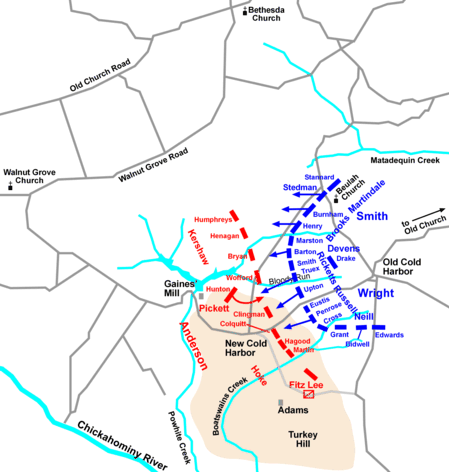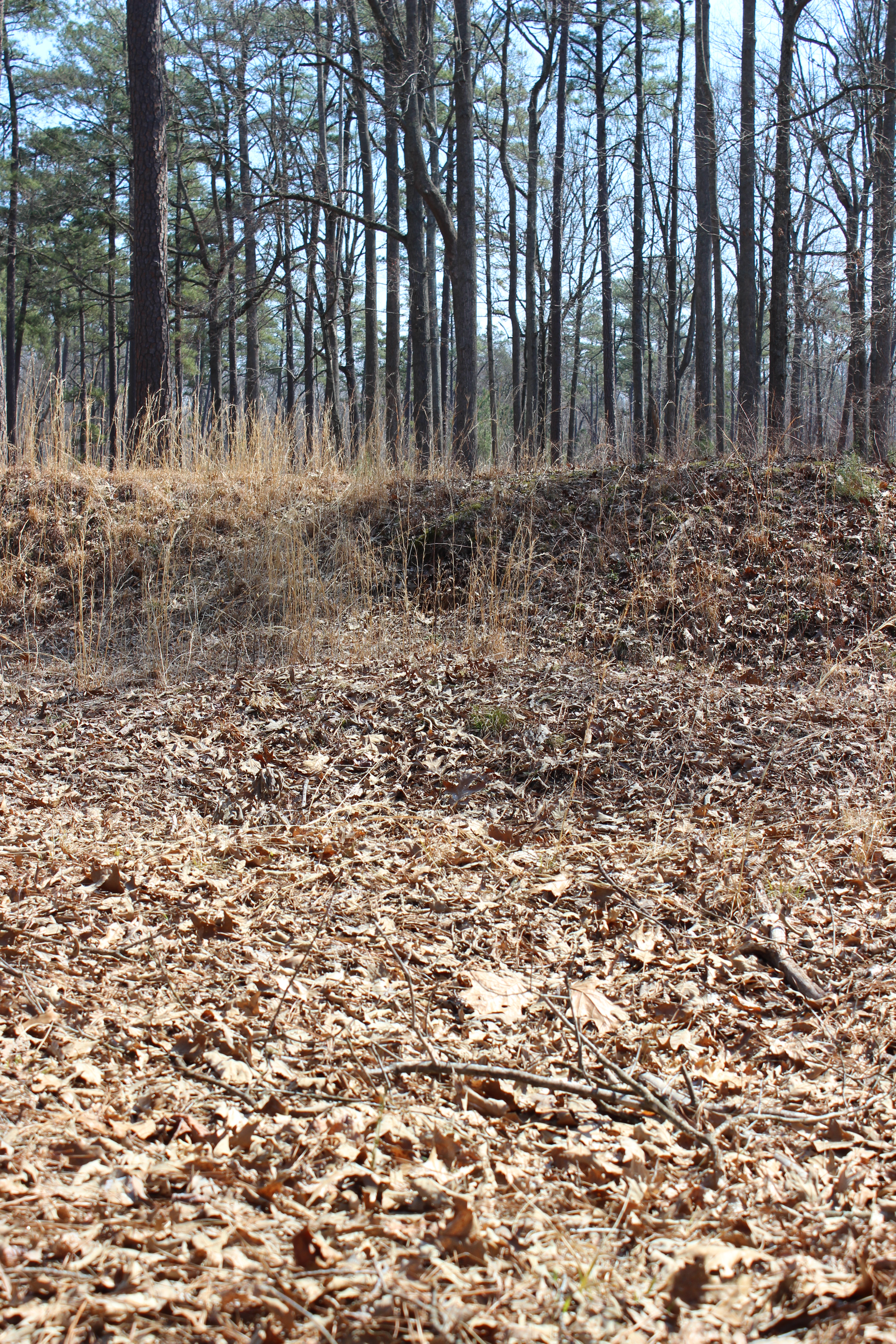“If You Realized What Is Going To Happen in the Morning…”
As June 1, 1864 turned into the history books, both sides reevaluated the current dispositions of their respective forces; and both leaders, Ulysses S. Grant and Robert E. Lee, sidled troops to this now very critical Virginia crossroads of Cold Harbor.
“What are your views about to-morrow?” George Meade, the somewhat nominal head of the Union Army of the Potomac wrote on the night of June 1st in a dispatch to Grant.
During that day, action had raged back and forth around Cold Harbor. On the Confederate side, Robert Hoke’s division which has been reassigned to the Army of Northern Virginia in late May, along with elements of Richard Anderson’s First Corps had tried their best to not only stem the Union advance but try and recapture the important crossroads.

(courtesy of Wiki)
Grant wanted to continue the offensive, but wanted to wait until more men could be shuttled down to the Union left flank. When Confederate lookouts spotted movements of Union forces shifting from the Confederate left to the right, Lee had to respond in turn. He chose for the assignment another division of recently arrived reinforcements.
Under the command of a one-time vice president, the troops serving under John C. Breckenridge had come east after defeating a Union force at the Battle of New Market (see this post for information on the Battle of New Market).
Yet, Breckenridge’s forces would have a difficult night of marching ahead of them, compounded by the fact that their guide was not all-to-familiar with the road network behind the Confederate lines.
Two more Confederate divisions would also be detached from the Confederate left and marched behind the lines to reach the Confederate right flank; Cadmus Wilcox and William Mahone’s Third Corps divisions would continue the Confederate build-up and finally anchor the right flank on the Chickahominy River.

(courtesy of LoC)
Yet, Lee was cagey and was not just going to react to Grant’s movement of troops. While three divisions sidled to the right, the now extreme left flank of the Confederate army, occupied mostly by the Second Corps moved forward, with the remaining Third Corps division under Harry Heth and drove into Ambrose Burnside’s IX Corps Union Corps.
Although remembered by heavy participants as “a heavy discharge of shot and shell” and “heavy fighting” Early’s attack initially drove elements of the IX Corps “from their entrenchments” but the advanced sputtered and then was driven back when the Union V Corps lent a hand. Once again, Bethesda Church was the scene of intense fighting.
Meanwhile, other Confederates used the lull in fighting along most of the line to continue digging of entrenchments and making even stronger the earthworks along the lines. An exchange between soldiers in the 4th Alabama, highlighted the importance of these earthworks for the fighting both sides knew was coming on the morrow;
 Sergeant Murphy stopped to chat with a lieutenant that had completed his work on the his portion of the entrenchments; “My goodness, Lieutenant, you can certainly beat any of us at it [digging of trenches].
Sergeant Murphy stopped to chat with a lieutenant that had completed his work on the his portion of the entrenchments; “My goodness, Lieutenant, you can certainly beat any of us at it [digging of trenches].
“Yes, and if you realized what is going to happen in the morning you would be at it yourself,” was the reply of this young junior officer.
“What is going to happen in the morning…” that was the question being pondered by thousands of restless souls; from army commanders to the lowliest private on the night of June 2nd.
Reblogged this on 9 Months for the Union.